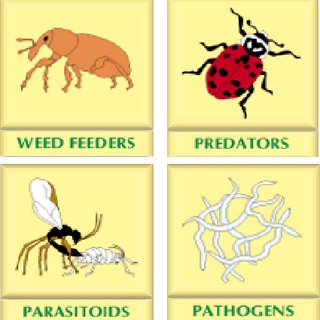In the intricate ecosystem of dragon fruit cultivation, the quest for sustainable pest management, the power of biological control agents. These natural allies, harnessed from the depths of nature’s arsenal, stand as guardians, orchestrating a delicate balance that nurtures the health and vitality of dragon fruit plants. In this comprehensive exploration, we delve into the realm of biological control agents and their profound impact on the cultivation of dragon fruit.
Table of Contents
Biological Control Agents
At the heart of biological control agents lies a simple yet profound principle: nature’s innate ability to regulate itself. Unlike conventional pesticides, which may disrupt ecosystems and harm non-target organisms, these control agents work in harmony with nature, leveraging natural predators, parasites, and pathogens to manage pest populations effectively.

1. Predatory Insects: Nature’s Vigilant Guardians
Predatory insects, such as ladybugs, lacewings, and predatory mites, emerge as stalwart defenders in the battle against pest infestations. These voracious hunters seek out and consume pests, including aphids, mites, and thrips, which can wreak havoc on dragon fruit plants. Their presence not only keeps pest populations in check but also contributes to a balanced ecosystem within the orchard.
2. Parasitic Wasps: Silent Sentinels of Pest Control
Parasitic wasps, often overshadowed by their stinging counterparts, play a pivotal role in biological pest control. These tiny warriors lay their eggs inside pest insects, such as caterpillars and leaf miners, effectively neutralizing them from within. By disrupting the life cycle of pests, parasitic wasps help prevent outbreaks and maintain the delicate equilibrium of the orchard ecosystem.
3. Microbial Pathogens: Nature’s Invisible Warriors
Harnessing the power of microbial pathogens for pest management represents a sophisticated approach to biological control. Beneficial fungi and bacteria, such as Beauveria bassiana and Bacillus thuringiensis, target specific pests while sparing beneficial organisms. Their ability to infect and incapacitate pests offers growers a targeted and environmentally friendly alternative to chemical pesticides.
Implementation of Biological Control Agents in Dragon Fruit Cultivation
The integration of biological control agents into integrated pest management (IPM) programs requires careful planning and execution. Growers must consider factors such as pest species, environmental conditions, and compatibility with other management practices to maximize effectiveness.

- Identification of Pest Pressure: Thorough monitoring and identification of pest populations are essential for determining the most appropriate biological control agents to deploy.
- Release Timing: Strategic timing of biological control agent releases aligns with pest life cycles, ensuring maximum impact and long-term suppression of pest populations.
- Optimal Conditions: Providing optimal environmental conditions, such as adequate humidity and temperature ranges, enhances the effectiveness of biological control agents in targeting pests.
- Compatibility with Other Practices: Integrating biological control agents with cultural practices, such as sanitation and habitat manipulation, creates a synergistic approach to pest management, maximizing overall efficacy.
Challenges and Considerations in Biological Pest Control

While biological control agents offer sustainable pest management solutions, they are not without challenges and limitations. Factors such as environmental variability, pest resistance, and compatibility with other control methods must be carefully considered to ensure successful implementation.
- Environmental Sensitivity: Biological control agents may be sensitive to environmental conditions, requiring careful monitoring and management to optimize their effectiveness.
- Pest Resistance: Prolonged reliance on a single biological control agent may lead to pest resistance over time, necessitating the rotation or integration of multiple agents to maintain efficacy.
- Non-Target Effects: While selective in their targeting of pests, biological control agents may inadvertently affect non-target organisms, highlighting the importance of thorough risk assessment and monitoring.
Innovations and Future Directions in Biological Pest Control

Technological advancements, scientific advancements, and ecological understanding are driving the field of biological pest control to evolve. From the development of novel biological control agents to advances in application methods and delivery systems, the future holds promise for further enhancing the efficacy and sustainability of pest management practices in dragon fruit cultivation.
- Genetic Engineering: Advances in genetic engineering offer the potential to develop biological control agents with enhanced targeting specificity and environmental tolerance.
- Precision Application Technologies: Precision application technologies, such as drones and automated release systems, enable targeted deployment of biological control agents, minimising environmental impact and optimizing resource utilisation.
- Microbial Consortia: The use of microbial consortia, comprising multiple beneficial microorganisms, represents a promising approach to enhance the resilience and efficacy of biological control agents against a broad spectrum of pests.
Conclusion: Embracing Nature’s Guardians for Sustainable Pest Management
In conclusion, the integration of biological control agents into dragon fruit cultivation practices heralds a new era of sustainable pest management. By harnessing the power of nature’s guardians, growers can mitigate pest pressure, reduce reliance on chemical pesticides, and foster resilient and thriving orchard ecosystems. As we embrace the principles of ecological balance and harmony, biological control agents stand as beacons of hope, guiding us towards a future where agriculture and nature coexist in perfect harmony.
